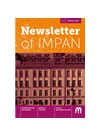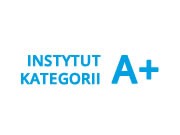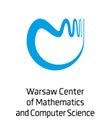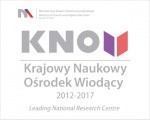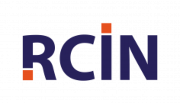Instytut Matematyczny Polskiej Akademii Nauk / pl / Działalność naukowa / Seminaria w IM PAN / Geometria niekomutatywna
Rok akademicki 2016/2017
3 October 2016, 14:15-15:45
NONCOMMUTATIVE METRIC GEOMETRY AND APPROXIMATELY FINITE-DIMENSIONAL ALGEBRAS
This talk concerns providing quantum metric structures for approximately finite-dimensional (AF) algebras and demonstrating convergence of AF algebras with respect to the quantum Gromov-Hausdorff propinquity. The quantum propinquity is a distance - introduced by F. Latrémolière - on certain classes of quantum metric spaces. We will show how to construct quantum metric structures on unital AF algebras with a faithful tracial state, prove that AF algebras are limits of their defining inductive sequence of finite-dimensional C*-algebras for the quantum propinquity, and conclude that classes of ultra hyperfinite (UHF) algebras and Effros-Shen algebras are continuous images of the Baire space. Then we will discuss general conditions for the convergence of AF algebras in quantum propinquity which give rise to new continuous families of AF algebras. In particular, we will show that the convergence of ideals in the Fell topology implies the convergence of quotients in quantum propinquity under suitable criteria. Finally, as an application of M. Rieffel's work on Leibniz seminorms and best approximations, we will present new quantum metric structures on unital AF algebras with or without a faithful tracial state. (Based on joint work with F. Latrémolière.)
KONRAD AGUILAR (University of Denver / IMPAN)
10 October 2016, 14:15-15:45
AUTOMORPHISMS AND MAXIMAL ABELIAN SUBALGEBRAS OF GRAPH C*-ALGEBRAS
We discuss recent work aimed at better understanding the structure of the outer automorphism group of unital, purely infinite, simple graph C*-algebras, with the Cuntz algebras as a case study. There are two main ingredients in this effort: a description of permutative and polynomial automorphisms (the Weyl group), and a classification up to conjugacy of maximal Abelian subalgebras (MASAs).
WOJCIECH SZYMAŃSKI (Syddansk Universitet, Odense / IMPAN)
17 October 2016, 10:30-12:00
ON ANALYTIC CONSTRUCTIONS OF GROUP COCYCLES
One of the most important group cocycles is the two-cocycle giving the central extension of the restricted general linear group of a polarised Hilbert space (H,H+). It has a wide scope of applications, ranging from conformal field theory to invariants of the algebraic K-theory. In this talk, we will sketch a construction of a family of two-categories associated to a pair of commuting idempotents acting on a Hilbert space, and construct the associated three-cocycle on the associated groups. For example, in the case of a two-Tate space, this produces an extension of the Tate symbol, and the corresponding invariant of K3alg, from the 2-Tate space to the two-torus. As another example we get a corresponding invariant of K3alg of the noncommutative two-torus. This is joint work in progress with Jens Kaad and Jesse Wolfson.
RYSZARD NEST (Københavns Universitet / IMPAN)
17 October 2016, 14:00-15:30
Fundamental groups and "higher theory" are useful tools in the study of geometry and topology of compact Riemannian manifolds. They give rise to refined invariants in K-theory of a group C*-algebra, and can be calculated by pairing their Chern character in cyclic homology with group cocycles. Motivating examples include the Connes-Moscovici localised index formulas and Lott's construction of higher eta-invariants in cyclic homology. The former are used to prove the Novikov conjecture for hyperbolic groups, and the latter give rise to refined spectral invariants for compact manifolds with boundary. Donaldson invariants, an important concept in gauge theory of closed 4-manifolds, also have a counterpart in the higher theory. We will show that they can be defined and calculated using cyclic homology. This is work in progress with T. Kato and H. Sasahira.
HANG WANG (The University of Adelaide / IMPAN)
24 October 2016, 10:30-12:00
K-HOMOLOGY AND INDEX THEORY ON CONTACT MANIFOLDS
The Baum-Douglas isomorphism of topological and analytic K-homology can be taken as providing a framework within which the Atiyah-Singer index theorem can be extended to certain non-elliptic differential operators. This talk considers a class of non-elliptic differential operators that arise on compact contact manifolds. In particular, we will focus on solving the Heisenberg-elliptic index problem. This is joint work with Erik van Erp.
PAUL F. BAUM (Penn State University / IMPAN)
24 October 2016, 14:00-15:30
KK-THEORY AND COHOMOLOGY OF ARITHMETIC GROUPS
Cohomology of arithmetic groups and its structure as a Hecke module plays a prominent role in modern number theory. Classically, the cohomology of an arithmetic group Г can be studied geometrically through its action on the associated global symmetric space X. In low dimensions, such actions produce non-compact hyperbolic manifolds as quotient spaces, as well as dynamically complicated actions on the boundary of X. In joint work with M. H. Sengun, we show that the cohomology of Г, as a Hecke module, can be captured by the K-groups of certain noncommutative C*-algebras which encode the action of Г both on X and on its boundary. The Hecke operators can be rigidly defined as explicit classes in KK-theory acting on relevant K-groups in a way compatible with Morita equivalence and boundary maps. This provides a uniform framework to study the K-homology of arithmetic groups.
BRAM MESLAND (Leibniz Universität Hannover / IMPAN)
28 October 2016, 14:30-16:00
ON C*-ALGEBRAS OF EXPONENTIAL LIE GROUPS
Although much is known about the representation theory of exponential Lie groups, there are not many results describing their C*-algebras. The aim of this talk is to give some such results. First we describe operator-valued Fourier transforms on C*-algebras of nilpotent Lie groups. Then we approach some basic topological properties of dual spaces of solvable Lie groups using suitable dynamical systems related to the coadjoint action, and show that the coadjoint dynamical system of any exponential solvable Lie group is a piecewise pullback of group bundles. (Joint work with Daniel Beltiţă and Jean Ludwig.)
INGRID BELTIŢĂ (Institute of Mathematics of the Romanian Academy)
4 November 2016, 14:00-15:30
ON FINITE-DIMENSIONAL APPROXIMATION PROPERTIES FOR TRACES ON C*-ALGEBRAS
In this talk, we first recall some finite-dimensional approximation properties of traces on C*-algebras. We mainly consider (uniform) amenable traces, (uniform) quasidiagonal traces, and (uniform) locally finite-dimensional traces. Then, some properties of the following classes of separable unital C*-algebras will be discussed: those whose all traces are (uniform) amenable traces, those whose all traces are (uniform) quasidiagonal traces, and those whose all traces are (uniform) locally finite-dimensional traces. Finally, we will show that the above classes of C*-algebras are closed under taking crossed products by finite group actions with Rokhlin property.
MARZIEH FOROUGH (Institute for Research in Fundamental Sciences, Iran)
7 November 2016, 10:30-12:00
COIDEALS, QUANTUM SUBGROUPS AND IDEMPOTENT STATES
We establish a one-to-one correspondence between idempotent states on a locally compact quantum group G and integrable coideals in the von Neumann algebra of G that are preserved by the scaling group. We also establish a one-to-one correspondence between open quantum subgroups of G and central idempotent states on the dual of G. Finally, we characterize coideals corresponding to open quantum subgroups of G as those that are normal and admit an atom. This talk is based on joint work with Paweł Kasprzak.
FATEMEH KHOSRAVI (Ferdowsi University of Mashhad, Iran)
7 November 2016, 14:00-15:30
PROTO-QUANTUM SPACES AND THEIR PROJECTIVE TENSOR PRODUCT
A proto-quantum space is a (general) matricially normed space in the sense of Effros and Ruan presented in a “matrix-free” language. We show that these spaces have a special (projective) tensor product possessing the universal property with respect to completely bounded bilinear operators. We study some general properties of this tensor product (among them a kind of adjoint associativity), and compute it for some tensor factors, notably for L1 spaces. In particular, we obtain what could be called the proto-quantum version of the Grothendieck theorem about classical projective tensor products by L1 spaces. At the end, we compare the new tensor product with the known projective tensor product of operator spaces, and show that the standard construction of the latter is not fit for general proto-quantum spaces.
ALEXANDER HELEMSKII (Moscow State University)
10 November 2016, 14:30-16:00
PARADOXICALITY AND PURE INFINITENESS OF C*-ALGEBRAS ASSOCIATED TO FELL BUNDLES
Paradoxical decompositions were popularized by Banach and Tarski in 1920's. Purely infinite (non-simple) C*-algebras were introduced by Kirchberg and Rørdam in 2000. We discuss a relationship between these two notions in the framework of Fell bundles over discrete groups. We present notions of aperiodicity, paradoxicality and residual infiniteness for Fell bundles, and show how they lead to pure infiniteness of the associated reduced cross-sectional C*-algebra. We also discuss how these results generalize and unify similar results obtained in the context of crossed products by the following duos: Laca-Spielberg, Jolissaint-Robertson and Sierakowski-Rørdam. (Based on joint work with Wojciech Szymański.)
BARTOSZ KWAŚNIEWSKI (University of Białystok)
14 November 2016, 10:30-12:00
FROM HOPF ALGEBRAS TO TOPOLOGICAL QUANTUM GROUPS: CHOICES, DIFFICULTIES AND ANNOYANCES
Quantum groups have been studied within several areas of mathematics and mathematical physics. This has led to different approaches, techniques and conventions. Moving from the well-established concept of Hopf algebras to topological quantum groups, where there is no general consensus regarding the concept, it is easy to get lost. Not only do many difficulties have to be overcome, but also several choices must be made. The way this has been done is often confusing and annoying. In this talk, I will discuss various aspects of choices, difficulties and annoyances encountered on the way from Hopf algebras to topological quantum groups. I will start with finite quantum groups, then continue with discrete and compact quantum groups, and finish with a discussion of different approaches to locally compact quantum groups.
ALFONS VAN DAELE (KU Leuven)
14 November 2016, 14:00-15:30
NONCOMMUTATIVE BORSUK-ULAM-TYPE CONJECTURES REVISITED
Let H be the C*-algebra of a non-trivial compact quantum group acting freely on a unital C*-algebra A. Baum, Dabrowski and Hajac conjectured that there does not exist an equivariant *-homomorphism from A to the equivariant noncommutative join C*-algebra A*H. When A is the C*-algebra of functions on a sphere, and H is the C*-algebra of functions on Z/2Z acting antipodally on the sphere, then the conjecture becomes the celebrated Borsuk-Ulam theorem. Recently, Chirvasitu and Passer proved the conjecture when H is commutative. In particular, in the setting of point-set topology, this allows us to deduce consequences for the Ageev conjecture concerning actions of p-adic integers on the Menger compacta. The main goal of this talk is to show how to extend the Chirvasitu-Passer result to a far more general setting assuming only that H admits a character different from the counit. We show how our result implies a noncommutative Brouwer fixed-point theorem and, in particular, the non-contractibility of such compact quantum groups. Finally, assuming that our compact quantum group is a q-deformation of a compact connected semisimple Lie group, we prove that there exists a finite-dimensional representation of the compact quantum group such that, for any C*-algebra A admitting a character, the finitely generated projective module associated with A*H via this representation is not stably free. (Based on joint work with P. M. Hajac and S. Neshveyev.)
LUDWIK DĄBROWSKI (SISSA, Trieste / IMPAN)
21 November 2016, 10:30-12:00
ON THE CLASSIFICATION OF SIMPLE C*-ALGEBRAS WITH FINITE NUCLEAR DIMENSION
Recently, a complete classification of unital simple (separable) UCT C*-algebras with finite nuclear dimension has been obtained, extending to the finite case the famous axiomatic result of Kirchberg and Phillips in the infinite case. This is a consequence of the work of many authors, over a period of thirty years. Some progress has been made in the non-unital setting. An abstract theorem has been obtained in the special case of trivial K-groups (joint work with Z. Niu). (In this case the tracial invariant is all that is left!) Preliminary results have been obtained in the general case (joint work with B. Jacelon and Niu).
GEORGE A. ELLIOTT (Fields Institute, University of Toronto)
21 November 2016, 14:00-15:30
THE CLASSIFICATION OF UNITAL GRAPH C*-ALGEBRAS
The ambition to classify graph C*-algebras goes back to the inception of the field. With the classification problem resolved for all simple graph C*-algebras around the turn of the millenium, the quest for classification of graph C*-algebras moved into the realm of non-simple C*-algebras, where it has been a key problem ever since. The endeavor has evolved in parallel with the gradual realization of what invariants may prove to be complete in the case when the number of ideals is finite and the C*-algebras in question are not stably finite. I will present a complete classification theorem for all unital graph C*-algebras (joint work with Restorff, Ruiz and Sørensen). Emphasizing the discrete nature of our proof, I will also discuss the difficulties involved in an attack on the general (non-unital) case.
SØREN EILERS (University of Copenhagen)
20 February 2017, 10:30-12:00
ON ISOMORPHISMS OF BEURLING ALGEBRAS
One of the most fundamental objectives in all areas of mathematics is to describe the general form of maps that preserve the basic structure of the objects being investigated. In abstract harmonic analysis, the first paper studying this question is credited to J. G. Wendel. He proved that, if G and H are locally compact topological groups and there is an isometric isomorphism between the group algebras L1(G) and L1(H), then the topological groups G and H are isomorphic. However, in general, the algebra structure of a group algebra does not necessarily determine its underlying topological group structure. Consequently, given the existence of an algebra isomorphism between group algebras, the underlying topological groups are isomorphic provided that we impose some constraints on the isomorphism such as being contractive, of small bound, or bipositive. In this talk, we study isomorphisms between Banach algebras defined on locally compact groups with a weight function, the so called Beurling algebras. We first see that any weighted locally compact group is completely determined by its Beurling group algebra. Then we show that the order structure combined with the algebra structure of the Beurling group algebra also determines the underlying topological group together with a constraint on the weight.
SAFOURA ZADEH (Université de Franche-Comté)
20 February 2017, 14:00-15:30
FACTORIALITY OF SOME q-DEFORMED VON NEUMANN ALGEBRAS
In this talk, we will discuss factoriality for some von Neumann algebras associated to q-deformed commutation relations. In particular, we will prove that the Bożejko-Speicher mixed q-Gaussian algebra is a factor. We will also show that factoriality holds for a wide class of q-deformed Araki-Woods algebras. This is joint work with Adam Skalski.
SIMENG WANG (Universität des Saarlandes)
6 March 2017, 10:30-12:00
QUANTUM SU(3) GROUPS WITH A COMPLEX DEFORMATION PARAMETER
In 1989, S. L. Woronowicz constructed compact quantum groups SUq(n) with 0<q<1. His method relied on a choice of a complex-valued function E on the set of maps from {1,...,n} to itself. However, for many choices of E, the related compact quantum group becomes classical. First, I will recall the construction, and review its special non-classical cases. Then, I will discuss the classification problem of compact quantum groups that can be obtained from a function E supported on permutations, and solve it for n=3. In particular, we obtain in this way a quantum SU(3) for a complex deformation parameter.
ANNA WYSOCZAŃSKA-KULA (Uniwersytet Wrocławski)
6 March 2017, 14:00-15:30
HERZ-SCHUR MULTIPLIERS AND APPROXIMATION PROPERTIES
Herz-Schur multipliers of a discrete group have proved useful in the study of C*-algebras, as they can be used to link properties of the group to approximation properties of the reduced group C*-algebra. The development of these ideas has shed light on some C*-algebra properties, and motivated the introduction and study of others. After introducing Herz-Schur multipliers, and discussing some of their applications, I will describe their generalisation to multipliers of a C*-dynamical system. Then, paralleling the applications of Herz-Schur multipliers, I will show how the generalised Herz-Schur multipliers can be used to study approximation properties of the reduced crossed product C*-algebra without requiring the group to be amenable.
ANDREW MCKEE (Queen's University, Belfast)
13 March 2017, 10:30-12:00
THE EQUIVARIANT CUNTZ SEMIGROUP
We introduce an equivariant version of the Cuntz semigroup that takes an action of a compact group into account. The equivariant Cuntz semigroup is naturally a semimodule over the representation semiring of the given group. One of our main results is an analog of Julg's theorem: the equivariant Cuntz semigroup is canonically isomorphic to the Cuntz semigroup of the crossed product. We compute the induced semimodule structure on the crossed product which, in the abelian case, is given by the dual action. As an application of our results, we show that freeness of a compact Lie group action on a compact Hausdorff space can be characterized in terms of a canonically defined map into the equivariant Cuntz semigroup, extending results of Atiyah and Segal for equivariant K-theory. This is joint work with Luis Santiago.
EUSEBIO GARDELLA (Universität Münster)
13 March 2017, 14:00-15:30
EQUIVARIANT MODEL THEORY AND C*-DYNAMICS
We introduce a model-theoretic framework for the study of actions of a locally compact group on metric structures. In this setting, we prove that the continuous part of the central sequence algebra of a strongly self-absorbing action is indistinguishable from (under the Continuum Hypothesis, equivariantly isomorphic to) the continuous part of the sequence algebra. As another application, we present a unified approach to several dimensional inequalities in C*-algebras. This is done through the notion of order-zero dimension for an (equivariant) homomorphism. Finiteness of the order-zero dimension implies that the dimension of the target algebra can be bounded by the dimension of the domain. The dimension can be, among others, decomposition rank, nuclear dimension, or the Rokhlin dimension. As a consequence, we obtain new inequalities for these quantities. Next, we show that, if a C*-algebra A absorbs a strongly self-absorbing C*-algebra D, and α is an action of a compact group G on A with finite Rokhlin dimension with commuting towers, then α absorbs any strongly self-absorbing action of G on D. This has a number of interesting consequences, already in the case of the trivial action. For example, D-stability passes from A to the crossed product. Additionally, our result restricts the possible (finite) value of the Rokhlin dimension of actions on Jiang-Su-absorbing C*-algebras to 0 or 1. It also implies that an action of a finite group with finite Rokhlin dimension with commuting towers automatically has the Rokhlin property if the algebra is UHF-absorbing. This is joint work with Martino Lupini.
EUSEBIO GARDELLA (Universität Münster)
20 March 2017, 10:30-12:00
LANDSTAD-VAES THEORY FOR LOCALLY COMPACT QUANTUM GROUPS
Landstad-Vaes theory concerns the structure of the crossed product of a C*-algebra by an action of a locally compact (quantum) group. In particular, it describes the position of the original algebra inside the crossed product. This structural problem was solved in 1979 by Landstad for locally compact groups, and in 2005 by Vaes for regular locally compact quantum groups. We will show how to extend the result to non-regular locally compact quantum groups by modifying the notion of a dynamical system using the novel concept of a weak action of quantum groups on C*-algebras. It is still possible to define a crossed product (by a weak action) and characterise the position of the original algebra inside the crossed product, which is unique up to isomorphism. Finally, we will discuss an example of a weak action of the simplified E(2) group.
STANISŁAW LECH WORONOWICZ (IMPAN / Uniwersytet Warszawski)
27 March 2017, 10:30-12:00
FROM CHARACTER VARIETIES TO QUANTUM GROUPS
We will discuss a deformation-quantization of character varieties that underlines the Witten-Reshetikhin-Turaev topological quantum field theory. In particular, we will reveal its interesting algebraic properties, and show how it leads to a novel point of view on quantum groups.
ADAM S. SIKORA (SUNY at Buffalo)
27 March 2017, 14:00-15:30
Recall that a semitopological semigroup is a topological space that is a semigroup with respect to a composition that is separately continuous in the product topology. Semitopological semigroups arise naturally in the study of various semigroup compactifications of locally compact groups. In this context, a very powerful theorem is the Ellis joint-continuity theorem (1957). The theorem states that a (locally) compact semitopological group is a topological group. Compact semitopological quantum semigroups were introduced by M. Daws in 2014 as a tool to study weak almost periodicity of Hopf-von-Neumann algebras. In this talk, we show the necessary and sufficient conditions on a compact semitopological quantum semigroup that turn it into a compact quantum group. As a corollary, we recover the celebrated classical result of Ellis. (Joint work with Colin Mrozinski.)
BISWARUP DAS (Oulun yliopisto)
24 April 2017, 10:30-12:00
THE SUq(N)-INDUCED PUSZ-WORONOWICZ SECOND QUANTIZATION WITH APPLICATIONS TO OPERATOR SPACES
We will consider generalized Fock spaces using Yang-Baxter-Hecke operators. One of important examples comes from Pusz and Pusz-Woronowicz papers on compact quantum groups SUq(N). For q=0, this example becomes a model of the monotone noncommutative probability discovered by Lu and Muraki. Next, some applications to quantum Khinchine inequality and row and column operator Hilbert spaces will be presented. We will also introduce the functor of second quantization related to the Yang-Baxter operator, and discuss its applications to ultracontractivity of the generalized Ornstein-Uhlenbeck semigroup and the Haagerup amenability of some von Neumann algebras. Based in part on joint work with Eugene Lytvynov, Irina Rodionova, Janusz Wysoczański and Quanhua Xu.
MAREK BOŻEJKO (IMPAN)
24 April 2017, 14:00-15:30
BRAIDED HOPF ALGEBRAS FROM TWISTING
For a complex parameter q, the algebra A(SUq(2)) was shown to be a braided Hopf algebra in some braided tensor category. We show that there is a class of Hopf algebras for which, using the general framework of twisting, one can construct their braided versions. In particular, the Hopf algebras of SUq(n) and the quantum double torus belong to this class. Furthermore, the twisting can also be applied to the (co-,bi-)modules over the braidable Hopf algebras, and permits us to consider braided differential calculi. Based on joint work with Andrzej Sitarz.
ARKADIUSZ BOCHNIAK (Uniwersytet Jagielloński)
8 May 2017, 10:30-12:00
TRACIAL STABILITY FOR C*-ALGEBRAS
We consider tracial stability in the sense that tuples of elements of a C*-algebra with a trace that nearly satisfy a relation are close to tuples that actually satisfy the relation. Here both "near" and "close" are in terms of the associated 2-norm from the trace, e.g., the Hilbert-Schmidt norm for matrices. Precise definitions are stated in terms of liftings from tracial ultraproducts of C*-algebras. We will discuss matricial tracial stability and stability with respect to tracial norms on II1-factors and on real-rank-zero C*-algebras. In particular, we will completely characterize matricial tracial stability for nuclear C*-algebras in terms of certain approximation properties for traces. For non-nuclear C*-algebras, we will explain a relation between stability and Voiculescu's free entropy dimension. We will also discuss tracial stability for groups. This is a joint work with Don Hadwin.
TATIANA SHULMAN (IMPAN)
8 May 2017, 14:00-15:30
DOLBEAULT-DIRAC SPECTRAL TRIPLES
The notion of a non-commutative Kähler structure was recently introduced as a framework in which to understand the algebraic aspects of the various spectral triple constructions for the quantum flag manifolds. In this talk, we will build on this work and consider the analytic properties of these structures. More specifically, we will show that in the quantum homogeneous space case the domain of the associated Dolbeault-Dirac operator D can be completed to a Hilbert space on which D is extendable to a self-adjoint operator. Moreover, we prove that all commutators with D are bounded. We show how one can use the Kähler condition to greatly simplify the calculation of the spectrum of D. Finally, the classical relationship between the index of D and the holomorphic Euler characteristic is shown to carry over directly to the noncommutative setting. The quantum projective spaces are taken as the motivating family of examples leading to the construction of a new family of spectral triples. Time permitting, the extension of this construction to the quantum Grassmannians and the quantum Lagrangian Grassmannians will be discussed. Joint work with P. Somberg and B. Das.
RÉAMONN Ó BUACHALLA (IMPAN)
5 June 2017, 10:30-12:00
EXTENDED QUOTIENT IN REPRESENTATION THEORY
Let G be a topological group acting (by a continuous action) on a topological space X. The usual quotient X/G is obtained by collapsing each orbit to a point. The spectral extended quotient is obtained by replacing each orbit by the set of equivalence classes of irreducible representations of the orbit's isotropy group. In representation theory, the spectral extended quotient is used to describe the tempered dual of Lie groups and the smooth dual of p-adic groups. For Lie groups, this is a realization of ideas first introduced by G. Mackey and then developed further by N. Higson and other mathematicians. For p-adic groups, this is the subject of the Aubert-Baum-Plymen-Solleveld conjecture. All of the above can be viewed as "lifting" the Baum-Connes conjecture from K-theory to representation theory. Joint work with Anne-Marie Aubert, Alain Connes, Roger Plymen and Maarten Solleveld.
PAUL F. BAUM (Penn State University / IMPAN)
5 June 2017, 14:00-15:30
If a unital C*-algebra A admits a free action of a compact quantum group H, the type-one noncommutative Borsuk-Ulam conjecture (NCBU) of Baum-Dąbrowski-Hajac asserts that there is no equivariant morphism from A to the noncommutative join of A and H. First, I will discuss the limitations of join iteration techniques in the general setting, with a summary of the current state of this approach. Of particular interest here are when H is the C*-algebra of functions on a torsion-free compact group and when H is the group C*-algebra of a finite nonabelian simple group. The former case may be reduced to a purely topological problem, while the latter case is fundamentally noncommutative. Second, I will discuss a slight modification of the noncommutative join, wherein tensor products are replaced by nontrivial crossed products. The resulting modification of the type-one NCBU conjecture holds for a family of spheres and their joins, but it does not hold in general. (Some of this work is joint with Alexandru Chirvasitu.)
BENJAMIN PASSER (Technion-Israel Institute of Technology)



